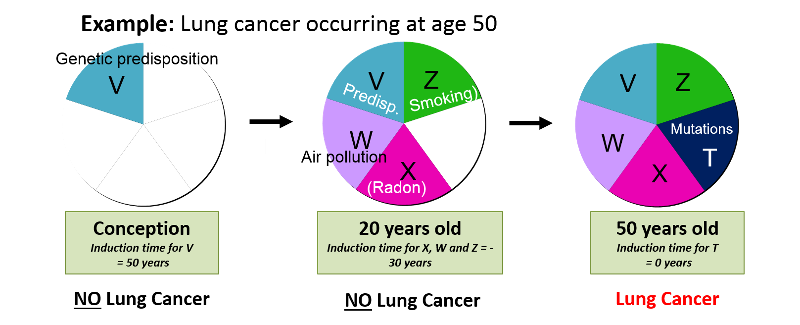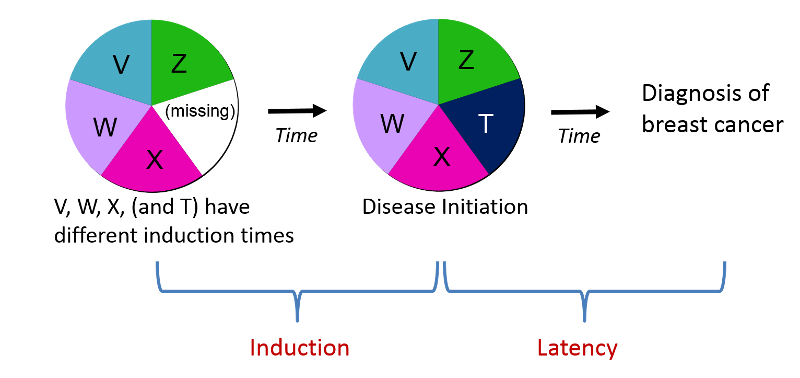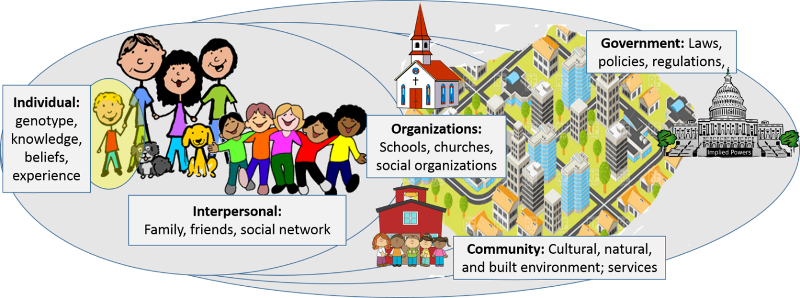Induction Period and Latency
The induction period is the interval between the time of action of a component cause and the time of initiation of disease. Different components of a cause can act at different times, so they can have different induction times as illustrated in the image below.

Disease is inevitable once a sufficient cause is complete, but may not be immediately evident, because:
- It may take time to become manifest (latency).
- It might be fortuitously cured before becoming manifest.
- Death from other causes might intervene.

Causal Inference
Causal inference is the process by which we make a judgment about whether an observed association is causal. Before making such a judgment one should:
- Consider the strength of the association.
- Consider validity (assess the possibility of random error, bias, and confounding)
- Consider the big picture: Is there a body of evidence supporting a causal relationship? Is it feasible that this exposure is a cause?
Most epidemiology studies address associations, but do not establish causality.
Conceptual Frameworks for Evaluating Relationships Between Exposures and Outcomes
There are several models that have been used to evaluate the association between exposures and health outcome. The classic epidemiologic approach to identifying etiologic factors is the exposure-disease framework depicted below, which might be useful for exploring whether smoking is associated with an increased risk of lung cancer, for example.

Environmental exposures are often more complex, and these often employee the conceptual model for environmental exposure-related disease , which makes it possible to summarize the possible causal pathway in more detail beginning with the source of the contaminant and taking into account the media into which it is distributed, the mode of exposure (inhalation, ingestion, or dermal absorption), the absorbed dose, the biologically effective dose, and the subsequent alterations in biologic structure and function that ultimately cause disease.

With growing recognition of the importance of social, economic, and political factors that have an impact on population health, it is also important to consider disease causation in a socio-ecological framework that conceptualizes relevant exposures not only on an individual level, but also takes into account interpersonal relationships (e.g., family, friends, social network), organizations (e.g., schools, church, social organizations), community (the cultural, natural, and built environment, and government (e.g., laws and policies that influence health).

As an example, consider that one's risk of cardiovascular disease can be influenced by many component factors: inherited predisposition (one's genome), personal behaviors and choices, interpersonal relationships (what your family and friends believe and how they behave), organizations (e.g., what you are taught in school or church), the characteristics of your community (e.g., does your environment invite exercise or discourage it?), and government laws and policies (e.g., the banning of trans fats).


